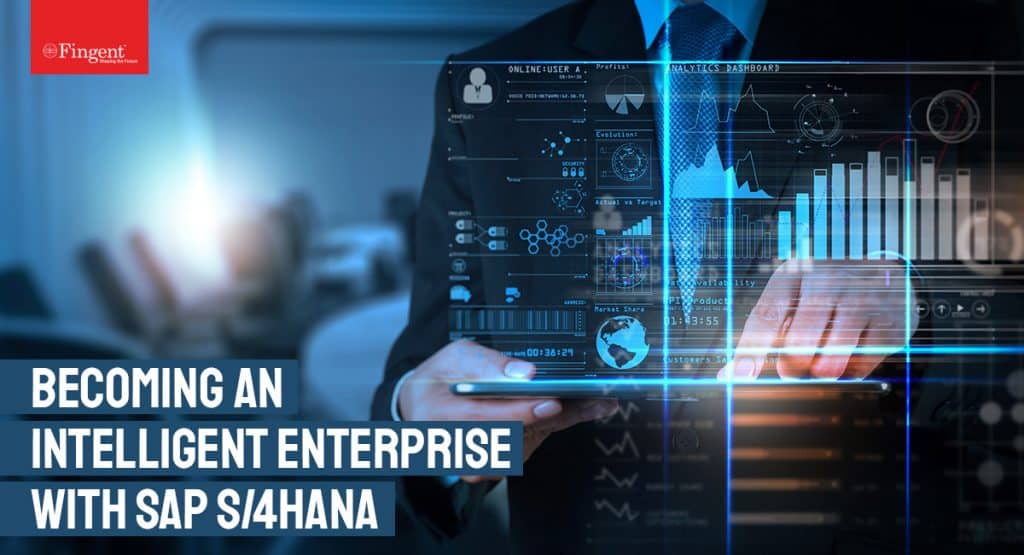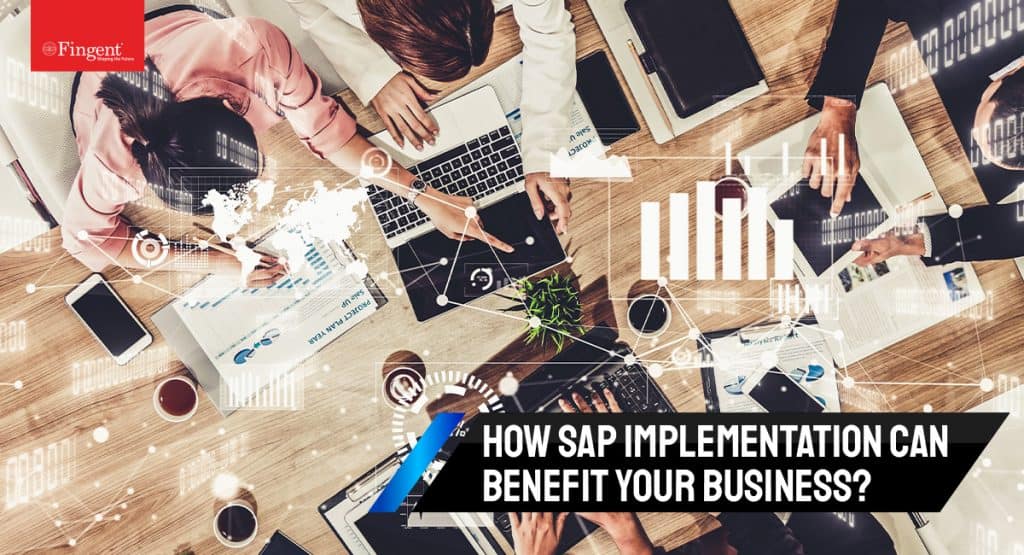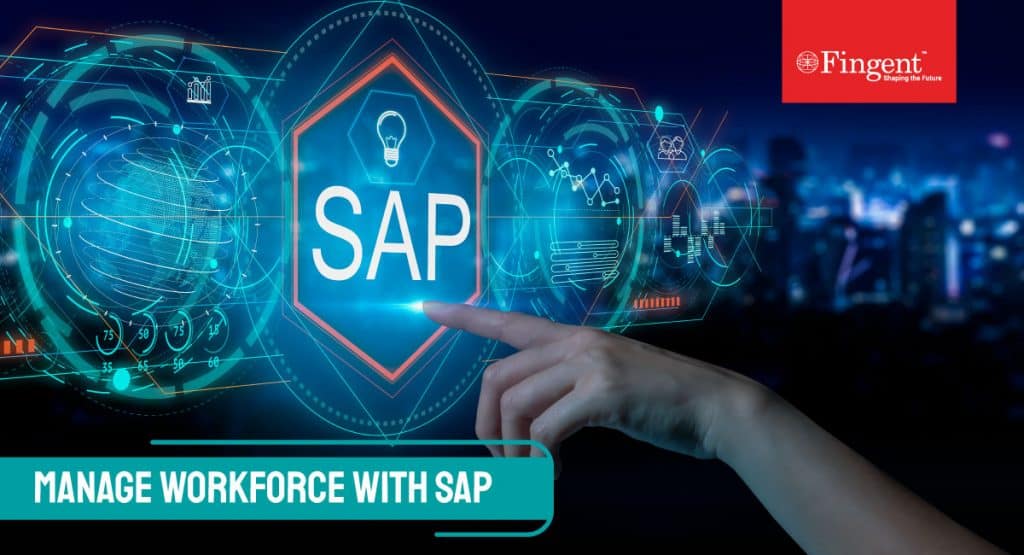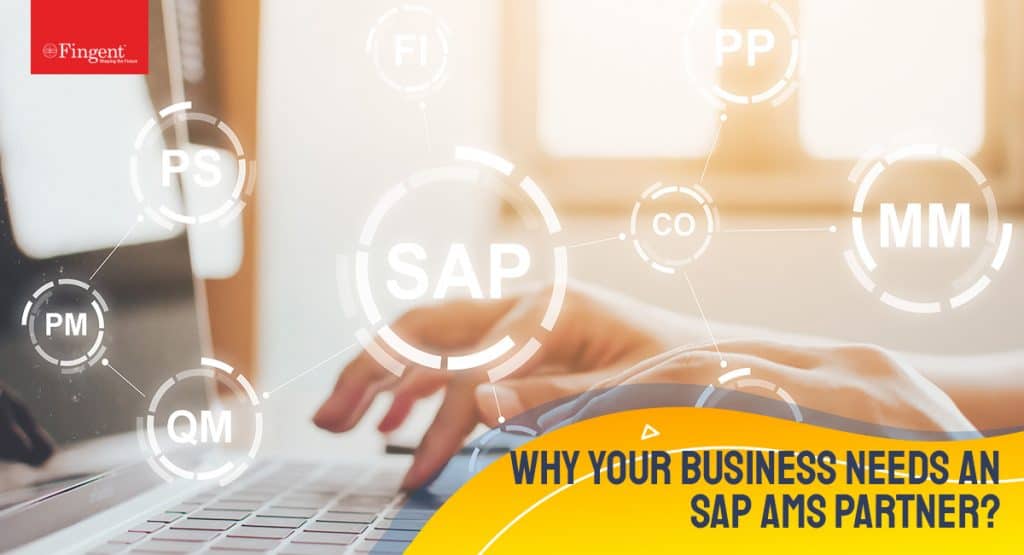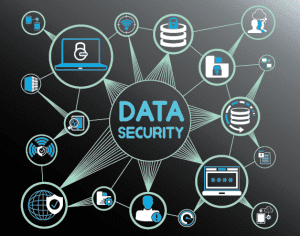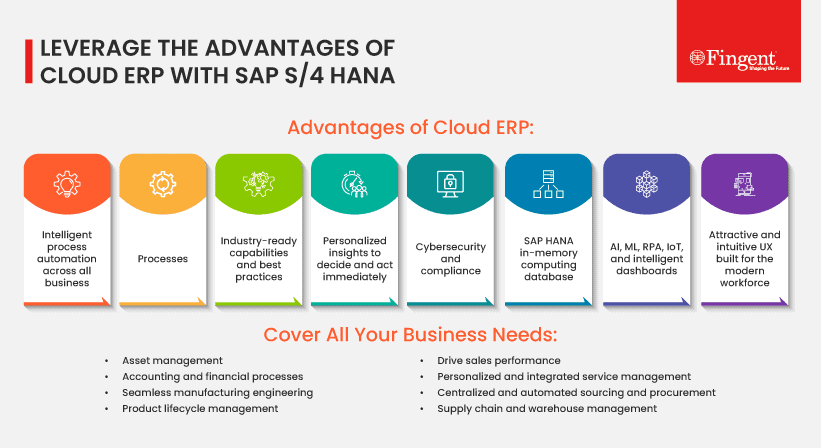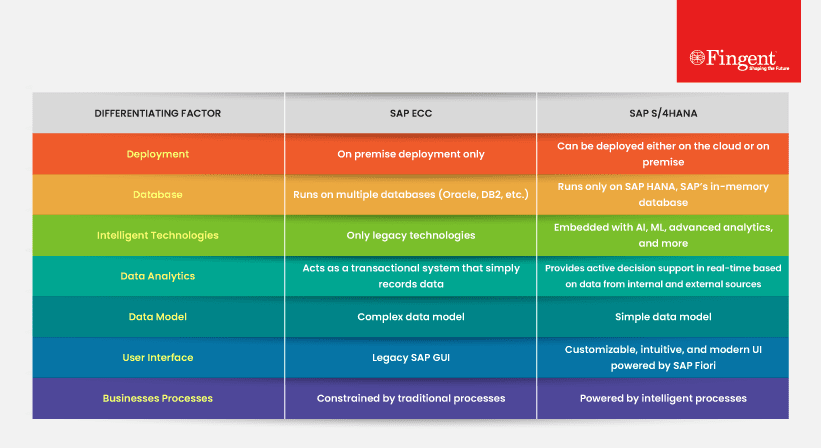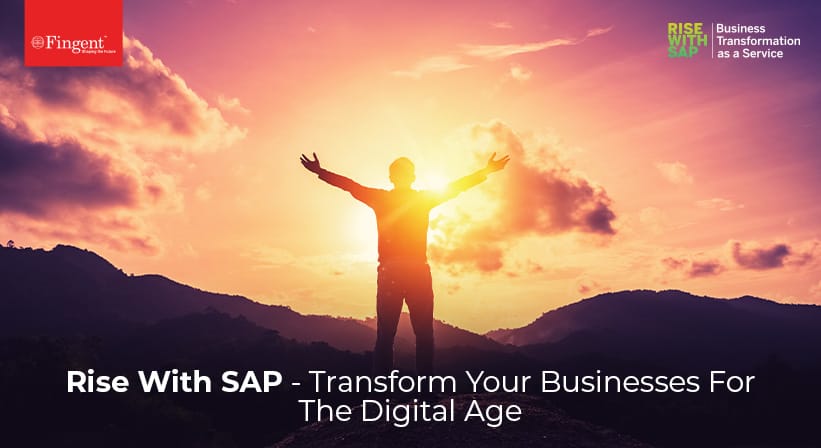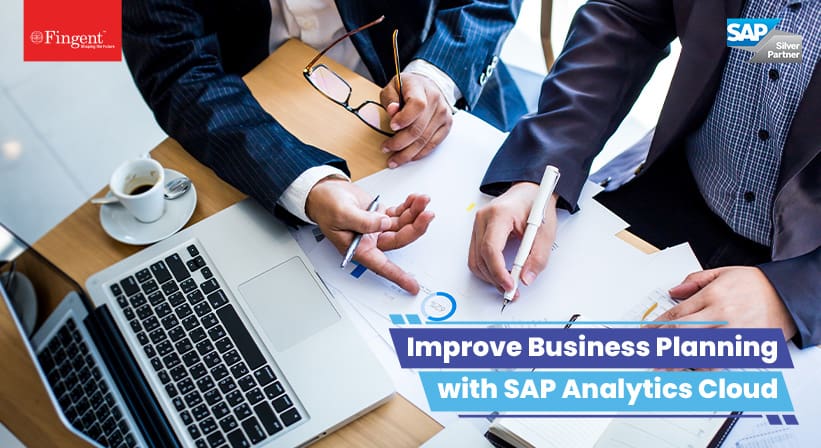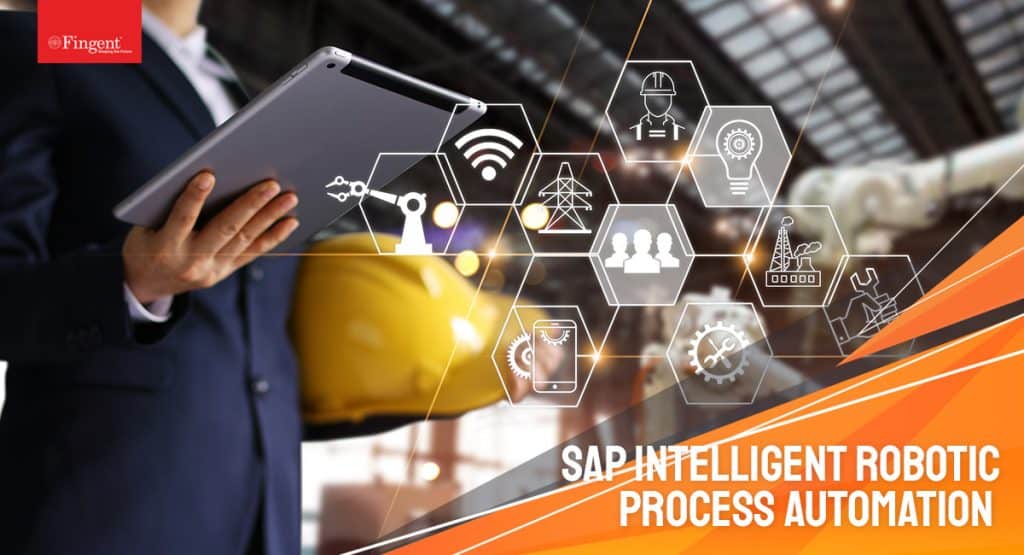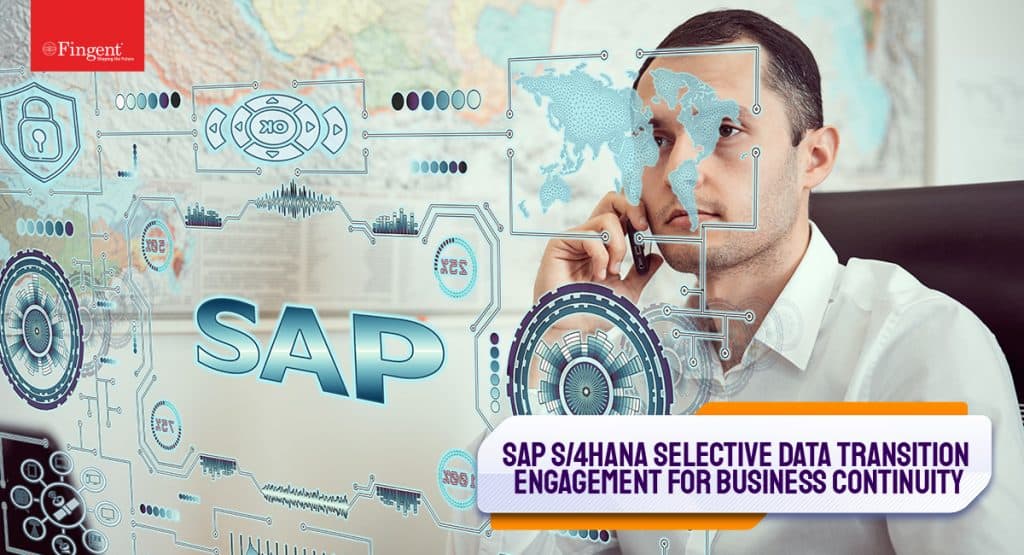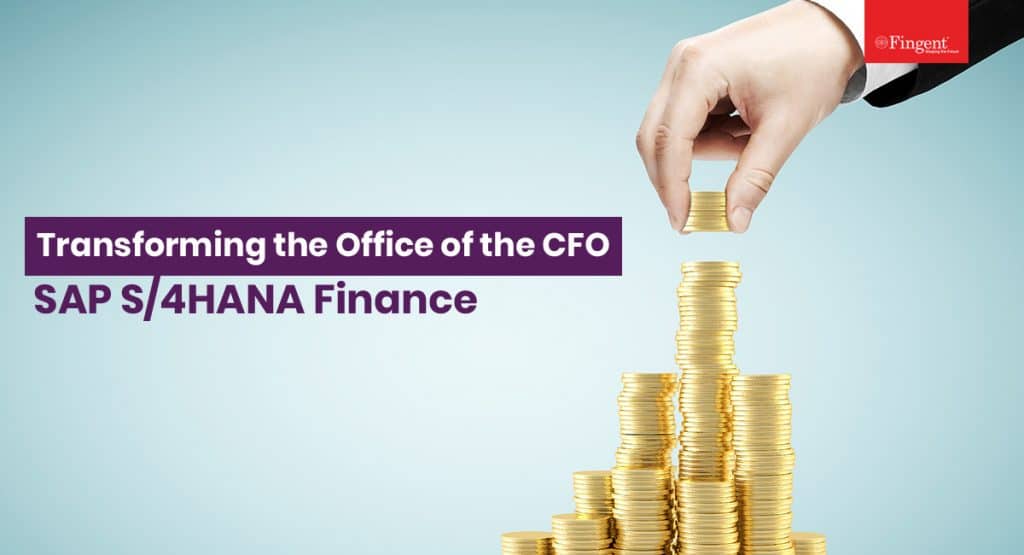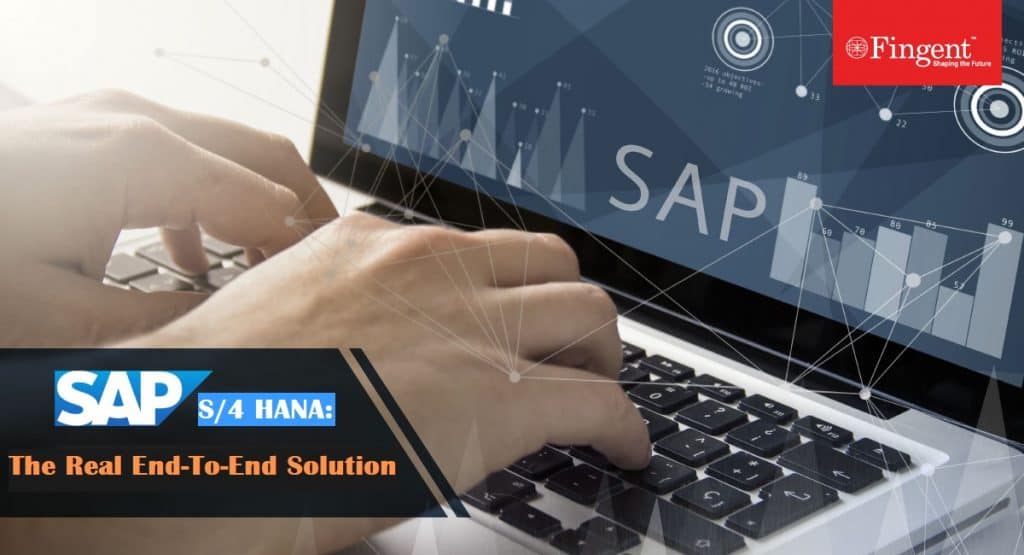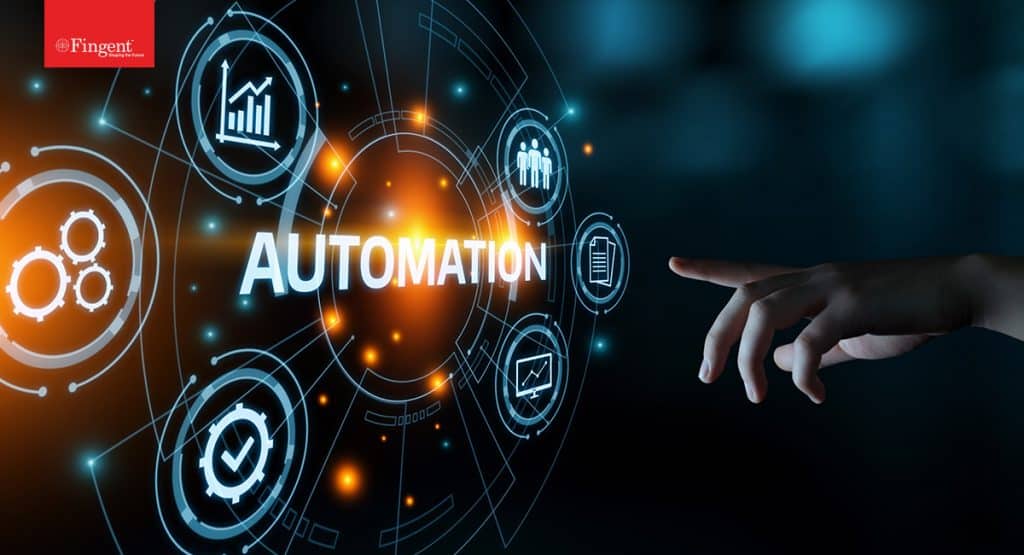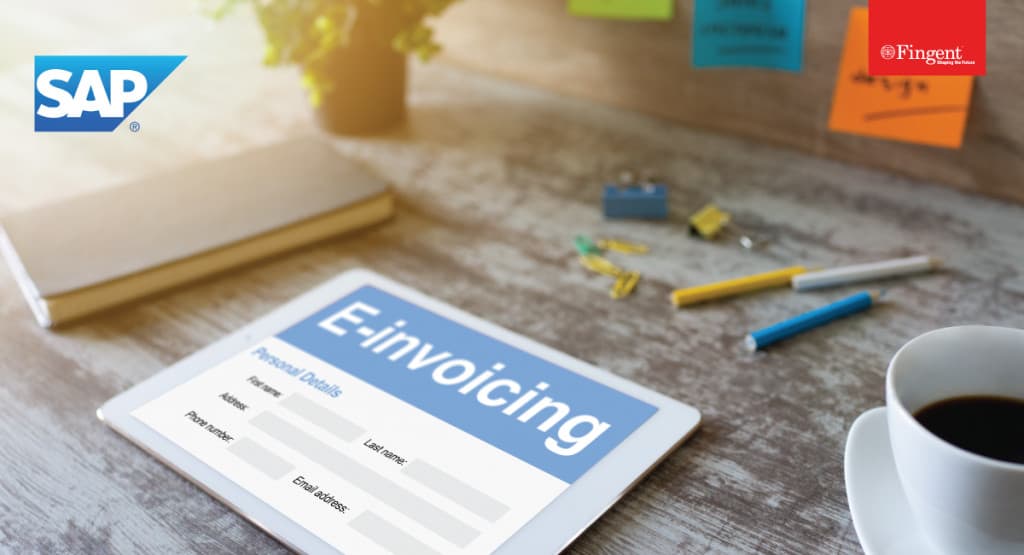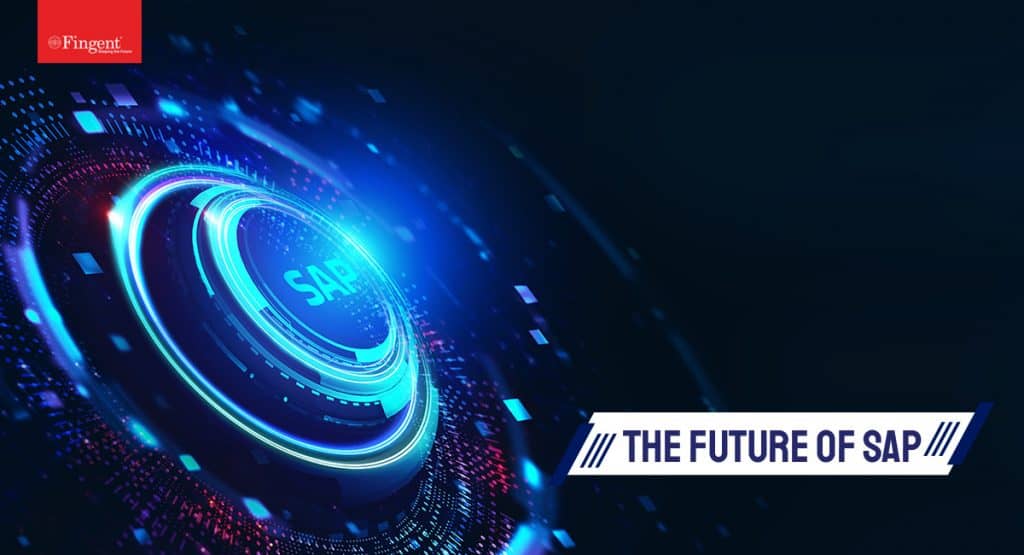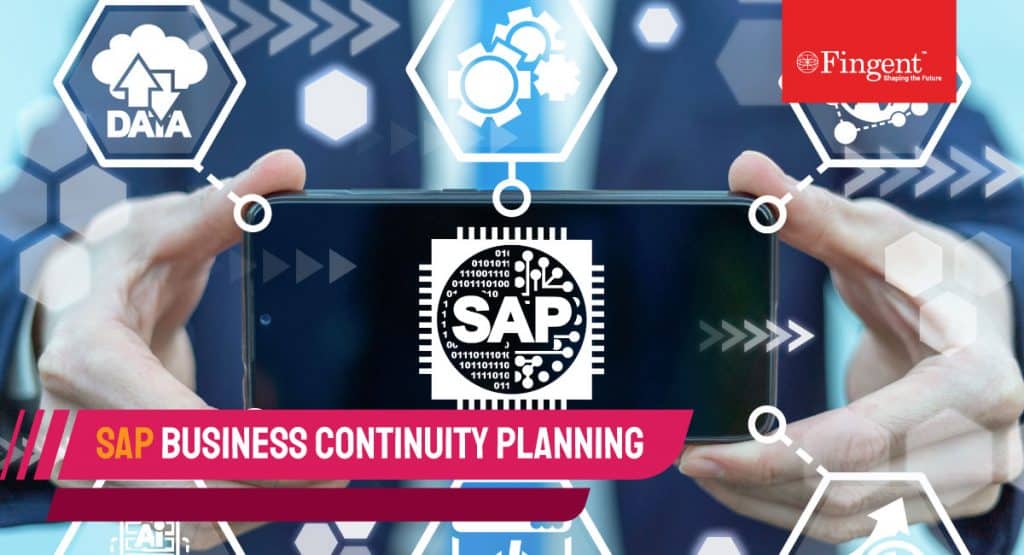Tag: SAP solutions
In today’s fast-paced business world, staying competitive goes beyond traditional strategies. The digital age requires a seamless blend of cutting-edge technologies. SAP, a global leader in enterprise software, offers a powerful solution – SAP S/4HANA Cloud and SAP Business Technology Platform (BTP).
In the journey of digital transformation, the collaboration of SAP S/4HANA Cloud and SAP BTP is a formidable alliance. This synergy streamlines operations and sets the stage for ongoing innovation. In this blog, let’s explore how SAP S/4HANA Cloud and SAP BTP shape the future of business, making transformation a continuous and evolving reality.
The Top Benefits of Integrating SAP S/4HANA Cloud and SAP BTP
In the ever-evolving landscape of digital transformation, the strategic combination of SAP S/4HANA Cloud and SAP Business Technology Platform (BTP) emerges as a game-changer. This powerful alliance not only streamlines business operations but also unlocks a myriad of benefits that propel organizations toward unparalleled efficiency and innovation. Let’s delve into the top advantages that businesses can harness by integrating these two robust SAP solutions.
1. Seamless Integration for End-to-End Processes
In the pursuit of operational excellence, the integration of SAP S/4HANA Cloud and SAP BTP shines as a beacon. By seamlessly connecting disparate business processes, organizations break down silos and achieve a unified, end-to-end view of their operations. This ensures not only streamlined processes but also empowers decision-makers with comprehensive insights, fostering collaboration and efficiency across the entire business spectrum.
2. Accelerating Innovation with Intelligent Technologies
The amalgamation of S/4HANA Cloud and BTP isn’t just about integrating systems; it’s about propelling innovation through intelligent technologies. S/4HANA Cloud leverages the power of artificial intelligence and machine learning, while BTP provides the platform to seamlessly integrate these intelligent technologies. The result? An innovation powerhouse that enables organizations to stay ahead of the curve, automate processes, and create new possibilities for growth and competitiveness.
3. Real-Time Analytics and Insights
In the digital age, information is power, and the combined might of S/4HANA Cloud and BTP ensures that power is harnessed to its fullest potential. S/4HANA Cloud’s in-memory computing capability facilitates real-time analytics, providing instant access to critical insights.
Complementing this, SAP BTP plays a pivotal role in enabling real-time analytics and harnessing data-driven insights. This not only enhances decision-making processes but also transforms raw data into actionable intelligence, fueling a proactive and agile business environment.
4. Agility and Flexibility in Cloud-Based Solutions
Agility is non-negotiable in the fast-paced business environment, and the integration of SAP S/4HANA Cloud’s cloud-native architecture with SAP BTP sets the stage for unparalleled flexibility. This collaboration allows businesses to respond swiftly to market changes and evolving demands. Integrated with SAP BTP, these cloud-based solutions empower organizations to navigate uncertainties with agility, ensuring seamless alignment of technology with business needs.
Read more: Driving Business Efficiency With The New SAP S/4HANA Cloud Public Edition
5. Integrated Development and Extension Scenarios
SAP BTP simplifies the development and extension of applications, streamlining the process for businesses to customize and enhance their solutions. This integration accelerates the development lifecycle and equips organizations with the tools needed to create tailored applications precisely aligned with unique requirements. The collaboration between S/4HANA Cloud and BTP fosters innovation and efficiency in the development and customization of solutions.
6. Data Management and Governance
Effective data management is fundamental for successful digital transformation. SAP S/4HANA Cloud contributes robust capabilities for data management, while SAP BTP ensures governance, offering a comprehensive approach to maintaining data integrity in the digital landscape. This collaboration enhances data quality and establishes a framework for responsible and compliant data practices, ensuring a solid foundation for digital initiatives.
7. Security and Compliance
In an era where data breaches are a constant threat, the security of digital assets is paramount. SAP S/4HANA Cloud addresses security considerations within its infrastructure, and SAP BTP plays a pivotal role in ensuring compliance with industry regulations. Together, they provide a comprehensive security blanket, safeguarding businesses against risks and ensuring the integrity of sensitive information through a unified security and compliance framework.
8. Scalability and Cost Optimization
As business landscapes evolve, technology must evolve with them. SAP S/4HANA Cloud’s scalability features, coupled with the cost optimization potential of cloud-based solutions, ensure that businesses can scale resources based on demand. This collaboration not only enhances operational efficiency but also guarantees long-term value through scalable and cost-effective solutions, aligning technology seamlessly with evolving business requirements.
Driving Business Excellence: A Case Study on How SAP S/4HANA Cloud and SAP BTP Propel Efficiency
A case in point is Corvias, a real estate innovator, as highlighted in a recent SAP news article. Let’s delve into this use case to understand how the combination of SAP S/4HANA Cloud and SAP BTP has driven efficiency and excellence for Corvias.
Corvias: A Case Study in Efficiency Maximization
Corvias faced the challenge of optimizing their complex real estate operations, spanning housing, construction, and property management. By implementing SAP S/4HANA Cloud and SAP BTP, Corvias experienced a holistic transformation. The seamless integration of end-to-end processes, from financials to supply chain management, broke down operational silos, providing Corvias with a unified view of their business.
- Agility and Flexibility: The cloud-native architecture of S/4HANA Cloud enabled Corvias to respond to market changes swiftly. Integrated with SAP BTP, the solutions provided unprecedented flexibility, allowing Corvias to adapt its technology infrastructure to evolving business demands.
- Innovation Acceleration: Leveraging the intelligent technologies within S/4HANA Cloud, Corvias embraced artificial intelligence and machine learning. SAP BTP facilitated the integration of these intelligent technologies, fostering innovation in processes, predictive analytics, and decision-making.
- Real-Time Analytics and Insights: In-memory computing in S/4HANA Cloud empowered Corvias with real-time analytics. SAP BTP’s role in enabling real-time analytics ensured that decision-makers had access to critical insights, driving informed decision-making across the organization.
The results were tangible – streamlined processes, enhanced collaboration, and ultimately, maximized results. The success story of Corvias exemplifies how the integration of SAP S/4HANA Cloud and SAP BTP can drive business excellence.
Read more: SAP S/4HANA Cloud Migration – All That You Need To Know!
Leveraging SAP Tools with Fingent
Wondering how to make the most of modern SAP tools? Fingent, a seasoned expert in SAP solutions, provides a robust suite of services. Collaborating with Fingent offers:
- Seamless Integration: Fingent excels in integrating SAP systems, ensuring a smooth flow of information across organizations.
- Customized Development and Extensions: Leveraging SAP BTP, Fingent creates bespoke applications tailored to specific business needs, boosting innovation and efficiency by aligning technology precisely with unique requirements.
- Top-notch Data Management, Governance, and Security: Fingent’s SAP data management expertise, combined with SAP S/4HANA Cloud’s governance capabilities, ensures the integrity and security of critical data. Collaborating with Fingent guarantees a secure and compliant digital environment.
Unlock efficiency, innovation, and security by harnessing SAP tools and Fingent’s expertise. Take the leap towards a tailored, scalable, and secure digital future – collaborate with us today!
Stay up to date on what's new

Featured Blogs
Stay up to date on
what's new



Talk To Our Experts
A technology’s light shines brightest when it strives to consistently evolve and cater to the needs of society. In today’s world, running a successful business has become quite a challenge. Organizing all its vital and smaller processes into a unified system can be immensely helpful to business owners. SAP swiftly comes to the rescue here. It is also evidently evolving to reliably meet the needs and demands of modern businesses. In this article we will take a deeper look into these progressions and how they benefit a business.
What is SAP?
SAP is expanded to “Systems Applications and Products in Data Processing”. It was first developed in 1971 by IBM engineers. It integrates and stores common information while ensuring that data flows deftly from one component to another without the need for unnecessary data interference.
SAP is currently topping the charts as the best ERP software and houses hundreds of fully integrated modules overlaying various aspects of business management. There are essentially 2 Types of SAP ERP system Modules: Functional Modules and Technical Modules. Each module focuses on essential business functions, from human capital management and production planning to plant maintenance and quality management.
The Impact of SAP on Modern Business
SAP ERP has a prodigious impact on business management. It houses features that are helpful in every aspect of running a business. It isn’t news that organizations depend deeply on technological tools to collect and rapidly analyze data with an aim to deliver insights into the performance of the business.
SAP S/4HANA is currently used by more than 28 thousand organizations around the globe to process complex data and deliver realistic insights in real time through custom applications and innovative use cases. Listed below are a few fields that are indented by SAP ERP:
1. Retail
Inside the retail industry, S/4HANA specifically thrives as it extends real-time visibility into supply chain operations, ensuring that retailers can manage inventory levels better and boost customer satisfaction. With S/4HANA, retailers track product availability with ease and improve delivery times.
Adidas exemplified this when it installed S/4HANA to streamline its finances and supply chain processes aiding the brand to delivery more personalized customer experiences such as product and fit recommendations.
2. Consumer Goods
S/4HANA causes impressive impacts in the field of consumer goods. It qualifies organizations to efficiently manage product development, production, reduced costs, and distribution processes. Companies using S/4HANA are better at tracking product quality, reducing production errors, and ultimately improving supply chain efficiency.
3. Life Sciences
Life Science is probably the best field to witness SAP ERP technological tools’ magic. This industry uses S/4HANA to access real-time visibility into research and development processes, manage R&D pipelines and bring new products to market more quickly. With S/4HANA, life sciences organizations have the power to better manage their regulatory compliance requirements, refine data collection accuracy, and reduce time-to-market for new products.
A global pharmaceutical company titled – Boehringer Ingelheim, successfully implemented S/4HANA in order to better its financial processes and gain real-time insights into its global operations. The system was a grand success and now more than 80 companies in 41 countries from New Zealand to South America are using this system.
Top Ways SAP Is Evolving
Just like any reasonably good innovation, SAP too found room to improve and evolve in order to better benefit its users and drive modernization in the digital world. Aside from its simpler data models, friendlier user interfaces, better integration and amazing advancement in real-time analytics ingrained into S/4HANA software, SAP has shown some other signs of evolution.
1. Greater Integration
As new and fascinating technologies like AI, ML, and the IoT continue to unfold, S/4HANA is deftly integrating with these technologies. For example, S/4HANA is seen utilizing Artificial Intelligence and Machine Learning to offer highly advanced analytics and predictions. It also integrates with IoT devices to provide real-time data feedback. This takes business data processing to the next level and S/4HANA’s interaction with IoT enhances production quality.
2. Industry Functionality
S/4HANA is already known for its flexible nature while meeting the needs of industries, but in recent times we can see even more industry-specialized functionality features emerging. This largely includes enhanced functionality for drastically regulating industries like healthcare and finance.
3. Mobile Capabilities
It is clear to see that mobile technology is the fastest-evolving technology in the world. Keeping this is mind, S/4HANA has become increasingly mobile-friendly. This enhances its accessibility as almost everyone owns a smartphone in this era. Its benefits include new mobile applications that grant access to S/4HANA data and improved mobile web interfaces that make accessing S/4HANA on the go seamless.
4. User Experience
S/4HANA has always been laser-focused on quality user experience, and it is a positive sign that it is willing to work on this strength and hone its advantage. SAP continues to invest in simplifying the user interface and improving overall user experience. This includes new personalization tools and improved useability testing and design.
A Glimpse into The Future Of SAP
If anything is a guarantee, it is that SAP ERP will always find ways to improve and dominate modern business functions. A beneficial ERP generally has to create possibilities for companies to adapt and remodel with the agility and flexibility trending in today’s markets.
From a technological perspective, SAP is smartly integrating with all higher forms of technology, such as Machine Learning, IoT, and Artificial Intelligence. It utilizes a modular approach to provide an integrated, intelligent entourage of customers for cloud-native technologies.
From a business perspective, SAP ERP enables new business models like consumption-based billing and subscription-based businesses, which are seen as widespread in the market on the horizon.
Read more: Transforming Business with SAP S/4HANA Cloud
How Can Fingent Help?
Fingent has worked with many clients from 4 continents since 2003. Our experts focus on client-centered transparency and offer complete services with a wide range of SAP products.
With Fingent on your side, your SAP S/4HANA migration can never be tedious. Our unique SAP S/4HANA service implementation methodology assists you with preparing, exploring, configuring, and deploying enhanced capabilities with SAP. Connect with our experts today!
Stay up to date on what's new

Featured Blogs
Stay up to date on
what's new



Talk To Our Experts
“You on the cutting edge of technology have already made yesterday’s impossibilities the commonplace realities of today.” – Ronald Reagan
True to these words, the development and improvement of technology make possible several tasks we previously deemed impossible. The sky is quite the limit as long as humans are willing to innovate, create, and migrate.
This article will look at one of these brilliant technological advancements – SAP S/4HANA. We will also discuss how you can effectively migrate to this technology and benefit your business.
Introduction To SAP S/4HANA
SAP S/4HANA is SAP’s most famous product that works as a business suite with an in-memory database. It allows businesses to perform transactions, manage functions, and analyze data in real-time.
SAP S/4HANA is the digital heart of SAP’s plan to help its customers with digital transformations, including tedious tasks of modifying existing and new business processes. It is fabricated to house various advanced technologies, such as AI, machine learning, IoT, and advanced analytics. This enables it to help solve complex issues and analyze more information in real-time faster than any previous products.
Read more: SAP S/4HANA: The Definitive Guide!
Why Migrate To SAP S/4HANA?
There are innumerable reasons to migrate to S/4HANA, and listed below are a few important ones:
1. Cost-effective and fast
S/4HANA’s famous in-memory database improves the performance of complex business processes along with scalability and processing speeds. It plans, executes, analyzes, and reports data at exponential speeds.
2. Flexibility
The greatest benefit of S/4HANA is its compatibility with other databases, hardware, and software, making it the most versatile data solution available. It provides the flexibility to install new business acquisitions, proactively manage assets and eradicate mundane tasks from an employee’s workday.
3. Analytic Capacity
In-memory technology automatically means there will be no waste of time loading data from one location to another. S/4HANA reduces the time needed to perform even the most extensive reports. This, combined with its deftly built-in business intelligence functionalities, makes it capable of processing data in real time and taking required actions to overcome any hurdles.
4. Simple User Interface
For the sake of nostalgia and previous acclimations, SAP did not abandon its GUI of 20 years. However, a few modifications were still made to portray the enhanced business processes.
5. Future-proofing IT Investments
The sooner an organization migrates to SAP S/4HANA, the sooner it modernizes its business ecosystem. SAP is actively investing in this suite of business processes, and any future technological advancements will inevitably be pushed toward this fast-evolving and ingenious solution. Placing your eggs in this basket can help you in the long run.
Challenges Of Migrating To SAP S/4HANA
Just as with any business and technological transition, you are bound to face a few challenges while migrating to SAP S/4HANA. Listed below are a few:
1. Disorientation And Confusion
Being well-prepared for a conversion plan is always the first step in any SAP S/4HANA conversion project. Making conversion plans with fully detailed tasks to be performed in sequence and accurately calculating the time and effort it takes to convert the system is a serious responsibility.
2. Poorly-recorded legacy processes
Before jotting down a conversion plan it is imperative to evaluate existing processes. Often companies carry their existing problems to the new platform and regret the decision.
3. Complexity Of Custom Code
Custom code can be the backbone of information or the core code that unifies it. Conversion of any custom code to S/4HANA is an extremely complex task. An intensive study should be conducted to identify and evaluate the use of custom code. This analysis will then be the factor in deciding if the system can be converted or simply re-implemented.
Read now: How SAP S/4HANA Can Help Your Business to Become An Intelligent Enterprise?
Best Practices Of Migrating To SAP S/4HANA
As we’ve already seen, despite its many benefits, migrating to SAP S/4HANA can be challenging. It is far from impossible, however. Here are 5 best practices to keep in mind while making this conversion in order to keep the transition seamless:
1. Visualize your end goal
Figure out what your ideal ERP infrastructure and functionalities should look like. Starting a SAP migrating process means reverse integrating your ideal plan.
2. Determine what to rationalize, what to refine and what to conserve
This practice depends entirely on the application and which part of the business process it affects. Asses each module, component, and individual process that will be affected by the change and apply this practice to it.
3. Determine how much data is required for the move
If you want to reap the complete harvest of SAP S/4HANA with its advanced analytics, you have to carry over data from your existing ERP. The preceding data is what oils S/4HANA’s motors to be predictive and accurate in the first place.
4. Formulate an implementation strategy that reduces migration barriers
Every company’s migration process is different. However, Greenfield and Brownfield are the most famous ways of SAP S/4HANA migration. Greenfield is a total change from the old platform to the new platform and Brownfield is a technological upgrade.
5. Choose a consultant who specializes in selectivity
Picking the perfect partner for S/4HANA migration is critical to get the most out of the project. Find a partner who specializes in SAP environments and understands what the migration needs. Ensure that their selectivity in choosing what to migrate, what to preserve, and what to develop is on point.
How Fingent Can Help?
Fingent provides end-to-end planning, migration, and post-migration support and maintenance services. This includes tactical advisory on choosing the right S/4HANA migration path to suit your requirements. Our unique SAP S/4HANA service implementation methodology assists you with preparing, exploring, configuring, and deploying your project. We also provide support, project closure, and maintenance.
Fingent has a proven track record of helping clients across the globe with SAP S/4HANA implementation and migration. We can help you empower your business with this powerful too!
Reach out to us and talk to our experts.
Stay up to date on what's new

Featured Blogs
Stay up to date on
what's new



Talk To Our Experts
Most organizations assume that their work is done once SAP is implemented. Consider this: Do you own a car you have never given for servicing? Or any piece of equipment that has never been serviced yet continues to work optimally? Absolutely not!
Likewise, the SAP system must be optimized regularly to ensure smooth organization functioning. Such optimization will enable the business to reap the real benefits of SAP investments. In this article, let us look at how you can optimize the SAP system for better business performance.
Why Optimize SAP?
According to Uptime’s 2022 survey, 80% of data center managers and operators have experienced some type of outage in the past three years. One in five organizations reported a server outage involving significant financial loss, reputational damage, compliance breach, and more.
Did you know? Over 60% of failures result in at least $100,000 in total losses.
Optimizing your SAP system is necessary to ensure your business runs as efficiently as possible. Whether you are a large business or a small business, proper optimization of your SAP system can make a big difference in terms of efficiency, agility, and, more importantly, security.
Read more: 8 Ways SAP ERP Software Benefits Your Business
Benefits Of Optimizing Your SAP System
From startups to global conglomerates, all businesses can leverage the SAP system. It is a proven game-changer for businesses looking for ways to stay competitive, as it can equip them with tools and functionalities to enhance their performance. It can help your business:
1. Avoid Reactive Firefighting
Reactive firefighting comes into play when you have to work towards solving a situation whose outcomes are out of control. SAP takes that out of the equation. Once the SAP system is optimized, it gets easier to thoroughly, carefully, and practically monitor the systems instead of reactive firefighting.
2. Prevent Potential Failures
Optimizing your SAP system can enable quick and easy identification of potential problems within the SAP landscape. This prevents larger issues by enabling early detection of the issue even when their damage is minimal.
3. Reduce Noise
Nearly 40% of businesses suffered a major outage caused by human error, out of which 85% stem from staff failing to follow procedures or flaws in the processes.
Bombarding employees with notifications would lead to missing out on important information. SAP system optimization would reduce the unnecessary noise and the flooding of notifications that would otherwise occur. It could categorize the issue and help to focus on the matters that are actually important and may affect the bottom line.
4. Reduce Time-Consuming Processes
Time spent on tasks such as conducting daily performance and health checks, SLA, audit reports, and compliance reports adds up to quite a bit. This, in turn, can keep the team from focusing on fixing issues. SAP system optimization helps by enabling auto-scaling, which can detect types of applications, processes, and operating systems to deploy the right checks and limits.
It is important for every business to understand the benefits of optimizing its SAP system. But it is equally important to know the best practices. Before we consider that, let us consider common performance issues in the SAP system.
Common Performance Issues in SAP Systems
Performance issues may affect the entire SAP system or certain functions or operations. Around 10% of small and medium businesses have revealed that their per-hour downtime is over $50,000.
Performance issues can be divided into four categories: SAP application server, Database, Network, and Hardware. Here is an overview:
1. Application Server: The SAP application server is a complex amalgam of ABAP and JAVA application servers, filled with potential issues. System-wide, single transaction, and background job problems are typical, and slow performance may be intermittent or continuous.
Quick fixes can usually handle single-transaction issues, while system-wide surges may require extensive troubleshooting. That’s not all. Ad hoc performance issues, such as when CPU or memory usage abruptly rises, can also be tricky to diagnose. Furthermore, the JAVA server may suffer from sluggish performance due to an individual application or the entire cluster, and long-running jobs are often a cause of concern.
2. Database: These issues could range from slow data retrieval to long procedures, or even administrative errors. When attempting to diagnose the issue, it’s important to first recognize the type of database you have.
You should also make sure to check for high CPU or memory usage in the server, as that can be a major cause of the problem. Additionally, remember to make sure network latency isn’t the culprit. After all, that can heavily impact database performance!
3. Network: The issue with the network would be latency in all queries and truncations. If your server hardware is insufficient and slowing down SAP transactions, you may have to determine how many resources you need to support current SAP operations.
4. Hardware: Hardware issues may include bottlenecks that occur at certain times or around the clock.
Best Practices for Optimizing Your SAP System
Optimizing your SAP system involves a number of carefully executed steps, including optimizing your data structure, optimizing the architecture of your SAP system, and optimizing your applications and processes.
1. Data structure optimization – This involves making sure your data is organized in a way that is efficient and easy to access. It also involves ensuring that your data is properly indexed, ensuring that the most frequently used data is readily available.
2. Architecture optimization – This includes ensuring that your hardware and software are configured correctly in order to maximize system performance. It also means they are up to date with the latest versions and that any patches or hotfixes have been applied.
3. Application optimization – This involves making sure that your applications are running efficiently and that any bottlenecks are removed.
Testing And Monitoring Your SAP System Performance
The SAP system can be a powerhouse, but if it isn’t running optimally, it can bring your entire business to a screeching halt. To keep it in top shape, regular system health checks and performance monitoring are key – no matter how large or small your enterprise is.
Unfortunately, SAP doesn’t provide a straightforward way to monitor performance, troubleshoot problems, and get back to operations quickly. Instead, users are left with the tedious labor of manually analyzing each system component to find the root of the issue, which can take days and hurt the bottom line.
To prevent this, Fingent can help take care of monitoring critical tasks, work processes, batch processes, database stats, and more.
Read More: Optimize Workforce Management with SAP SuccessFactors and Qualtrics
How Can Fingent Help?
Successful optimization of the SAP system is the road to increasing ROI for your organization. But managing complex IT landscapes, different business processes, and multiple tools can be intimidating for in-house teams.
That’s why we at Fingent top custom software development company, provide audit and optimization services to ensure your organization reaches its goals with SAP. Our frameworks and methodologies help identify bottlenecks and bring the best out of SAP systems, helping you save money and improve your processes. Reach out to speak to our SAP experts and find out how we can help.
Stay up to date on what's new

Featured Blogs
Stay up to date on
what's new



Talk To Our Experts
“There are only two types of companies: those that have been hacked, and those that will be.”
– Robert Mueller, FBI Director, 2012.
Individuals and organizations are contributing to the global data boom every single day. And business hyperconnectivity creates new challenges in cyber security. Most organizations are adopting the “better safe than sorry” motto.
What can you do? This article will help you find the answer.
Security – A Very Real Challenge!
Did you know?
The global cyber insurance market is projected to double in size by 2015 to reach nearly 22 billion US dollars!
World data is set to grow to 175 zettabytes (that is, 175 followed by 21 zeros).
Companies worldwide are producing data in large amounts. And with large data comes the risk of higher manipulation. Are companies working on securing their data? Is your company prepared to combat a cyber attack? Cybersecurity is a real challenge! But with technology advancing each day, we now have better means to ensure data security. Let’s find out more about this!
Understanding SAP Security and Compliance
Maintaining a secure IT infrastructure is essential for any organization. SAP security is a means to protect your organization’s data. It monitors and controls access both internally and externally.
54% of organizations acknowledge that their IT departments are not adequately capable of handling advanced cyberattacks.
To protect their data, organizations should ensure that all user access is properly monitored, audit logs are regularly reviewed, and that access controls are regularly updated.
Additionally, organizations should implement a password policy to ensure all passwords are complex and regularly changed. Finally, organizations should confirm security patches are regularly applied to all SAP systems to prevent unauthorized access and potential data breaches. Best practices are key to ensuring your SAP systems remain secure and compliant.
Read more: Top Benefits Businesses Can Gain Form Fingent’s SAP AMS Practices.
Risks Associated with Poor SAP Security and Compliance
Poor security and compliance measures can expose a business to cybersecurity threats and data breaches. Without proper security measures, businesses are vulnerable to malicious attacks, unauthorized access, lawsuits, insurance rate hikes, criminal investigations, and bad press. Furthermore, it may result in heavy fines, reputation damage, and other losses. These are sufficient to put your organization out of business.
Did you know? The cost of data breaches may rise to over $5 trillion in 2024.
Therefore, businesses must understand the risks associated with poor SAP security and compliance and take the necessary steps to protect their systems and data. This includes implementing proper access control measures, monitoring user activities, and ensuring that all security measures are regularly updated and tested.
Common Challenges Faced in SAP Security Compliance
SAP security and compliance are becoming increasingly challenging for organizations of all sizes. As more organizations move to cloud-based SAP solutions, they face the challenge of ensuring consistent security and compliance across all systems.
In addition, as SAP applications continue to become more complex, organizations must ensure they have the right processes and tools to maintain security and compliance. Despite your understanding and diligence concerning safeguarding your SAP databases, chances are you are dealing with the following:
- Manual processes take too much time and are prone to errors, rendering it challenging to cover the entire digital estate.
- You will have to deal with heterogeneous point products that are difficult to manage.
- Third-party services that, in turn, are dependent on either of the aforementioned.
Organizations must have a comprehensive security compliance plan addressing these challenges to ensure their SAP systems are secure and compliant.
Read more: How secure is your business in a multi-cloud environment?
Eliminate Your SAP Cyber Security Blind spots with SAP System Best Practices.
SAP systems are the backbone of many business operations. As a result, ensuring the system is always secure and compliant with corporate policies is essential. To help ensure your SAP system is secure, here are some best practices you can follow:
1. Monitor user activity and implement user access controls
Ensure that all users have the least privileged access to do their job. This limits users’ access and reduces the chances of unauthorized access.
2. Teach the team to take responsibility
Everyone on the team may feel that they are not responsible for the breach. But the fact is that someone must take responsibility for the breach. And this fact must be made clear to all on the team.
3. Keep up to date on the latest enhancement packs
Periodically confirm that all patches and updates are installed regularly. This ensures that any security flaws in the system are addressed as soon as possible.
4. Ensure data is securely stored and encrypted
Develop a strong password policy. Require strong and unique passwords for each user and ensure that passwords are periodically changed. Use multi-factor authentication. This adds an extra layer of security and makes it more difficult for malicious users to access the system. Finally, monitor user activity regularly. This can help identify any suspicious activity or potential threats.
5. Revert to Standard installation
It’s essential to minimize the chances of potential security threats by replacing custom legacy code with updated, patched versions of the programming language standards and SAP applications. To do this, you should eliminate unused code to ensure you don’t accrue any vulnerable technical debt.
6. Identify security gaps
Staying secure requires early detection. Just as regular health checkups help detect issues early and provide a path for effective treatment, conducting frequent assessments of your ERP system can provide full visibility and comprehension of your ERP environment before you make modifications and detect when you may be lagging. Through regular health screenings, any security breaches can be identified.
Following these best practices will help keep the SAP environment secure. It is important to remember that security and compliance is an ongoing process and should be revisited and updated periodically to ensure it is up to date with industry standards.
How Can Fingent Help Attain the Best SAP Security Compliance
Determining which SAP security software is best for your business can be challenging, as it is an important decision. Fortunately, Fingent offers a tailored solution designed to keep critical systems secure. Our security solution also integrates with an organization’s wider cybersecurity monitoring, ensuring the security team is not left in the dark regarding potential threats.
Our experts understand the complexities of managing SAP compliance and are committed to making SAP support and compliance fit your budget and anticipate future needs. We strive to provide comprehensive and cost-effective solutions to all process aspects, including data reporting, administrative tasks, data analysis, and audits. Reach out to our experts and find out how we can help you.
Stay up to date on what's new

Featured Blogs
Stay up to date on
what's new



Talk To Our Experts
SAP ECC and SAP S/4HANA are two key ERP software offerings from SAP that allow enterprises to simplify the management of business processes, enable effective data processing, and facilitate streamlined information flow across organizations. Though SAP ECC is the most commonly used ERP software, things will change as SAP ends its support for ECC 6.0 in 2027. As ECC is reaching the end of the line, the most practical way for businesses to benefit from SAP’s exceptional solutions is to migrate to SAP S/4HANA.
Like ECC, S/4HANA too offers solutions to enhance business process efficiency and the customer experience in areas like finance, inventory and asset management, sales, marketing, HR, logistics and supply chain, and product development, but in an incredible and unprecedented manner.
Before moving to the world’s most intelligent and modern ERP, it’s important to understand how SAP S/4HANA is different from its predecessor, SAP ECC.
What is SAP ECC?
SAP ECC is short for SAP ERP Central Component, the previous generation of SAP’s enterprise resource planning (ERP) software. Due to its modular design, SAP ECC is highly customizable and can be configured to suit the different needs of a business, such as finance, logistics, warehousing, human resources, product planning, customer service, and so on. The most striking feature of ECC is its ability to work with third-party or customized applications. For example, ECC can operate on a third-party database such as IBM DB2 or Oracle database and can work with customized applications like business messaging apps.
Due to its interaction with different components in the landscape, ECC is flexible, which also brings in more complexities. This is because a change in one component can affect how other parts function in the ecosystem. So, rolling out any change, such as customization, upgrades, add-ons, or enhancements, demands a thorough and careful testing of the landscape to ensure that your important business functions remain undisrupted.
With SAP phasing out ECC, users are left with only one alternative: moving to S/4HANA.
Read more: SAP for Business: 9 Ways to Maximize Business Performance
What is SAP S/4HANA?
SAP S/4HANA is the world’s most intelligent, complete, and modular cloud ERP software that simplifies your business landscape. It facilitates accelerated deployment by lowering costs with a standardized core and brings agility through an open, modular, scalable, and innovative platform. S/4HANA service management integrates crucial functions from various lines of businesses and industries and incorporates parts of SAP Business Suite Products.
What is the difference between SAP ECC and SAP S/4HANA?
Though ECC provides modules covering a full range of industrial and enterprise applications that can be run on a database of the user’s choice, the legacy ERP system fails to leverage the intelligent technologies needed to be competitive today. S/4HANA differs from ECC in many aspects:
Why Move to SAP S/4HANA Now?
Making decisions based on accurate and appropriate data is critical to gain a competitive advantage in today’s dynamic world. With SAP S/4HANA, organizations can use data, people, and enterprise assets in an aggregated manner that best suits their business. Moving to SAP S/4HANA offers you the following advantages:
1. Simplified Technical and Data Architecture
Businesses are attracted to SAP S/4 HANA due to its simplified data table structure and access. SAP HANA’s in-memory computing platform provides a database that operates way faster than the database options used in ECC or any traditional OLTP system. In SAP S/4HANA, there is no need to separate OLTP and OLAP applications into different databases or applications, as a single HANA database can handle both types of operations effectively. The traditional OLTP systems are generally slow at reading and analyzing data that gets updated while processing transactions. SAP S/4HANA offers restructured data models, allowing customers to access data reports faster.
2. Access to Innovative Technologies
Introducing a fresh bulk of innovative technologies will help you address all the upcoming business requirements. Built-in machine learning is an outstanding capability of S/4HANA that automates key business processes across your organization. Real-time insights, predictive BI, and automation free your employees from mind-numbing work and help them focus on value-adding tasks. Access to innovative trend technologies will keep you one step ahead of your competitors.
3. Invest in Your Growth Strategy
You can build an appropriate strategy with fully-automated data if your business is growing and venturing into new markets. Remember that your current SAP ERP has a shorter shelf-life. Failing to catch up with the latest trends and developments will be costly. Investing in an intelligent ERP system is a business imperative, for it will support and complement your growth strategy and increase your speed-to-market.
4. Consistent User Experience Across All Devices
SAP Fiori – the design system that powers the user experience of SAP S/4HANA – defines how the new business value of S/4HANA is delivered to users. The Fiori design system delivers a modern user experience that works on various devices (desktop, laptop, tablet, smartphone) to ensure faster response times and better performance. Digital age user experience, end-to-end real-time analytics, new business processes (such as Group Reporting, Central Procurement, and Predictive MRP), and intelligent automation (such as Situation Handling, AI/ ML proposals, RPA) scenarios are the key value drivers for using SAP Fiori in SAP S/4HANA. Above anything, you need SAP Fiori to configure, adapt and extend SAP S/4HANA.
5. Avert The Risk of Falling Behind
SAP is no longer investing in ECC as the legacy ERP is reaching its end of life in 2027. On the other hand, SAP S/4HANA incorporates many innovative features through its dynamic quarterly releases that make its core even more intelligent. Several companies around the globe have already started their migration, and some are working fervently on their migration plans. Considering the predicted shortage of skilled SAP consultants and the rising cost of quality consulting services, it’s vital to bridge the gap and avert the risk of falling behind by acting now when there are available resources. Working with a trusted and certified SAP specialist, you can keep your project time, budget, and risk to the minimum. Also, if you have any plans to renew your hardware or hosting solutions, the SAP S/4HANA migration process and hardware purchase should happen simultaneously to avoid any non-compliance.
How Fingent Helps You Accomplish a Seamless Migration to SAP S/4HANA?
With Fingent, your SAP S/4HANA journey can never be complex. We offer the right S/4HANA solutions, expertise, and end-to-end services, including strategic advisory on choosing the right S/4HANA migration or conversion path to suit your requirements.
SAP S/4HANA Conversion Services
Our S/4HANA conversion services are customized to enable the smooth and rapid transition of your business systems, processes, and applications. We offer:
- Convert to SAP S/4HANA on a fixed budget and schedule
- On-premise or cloud-hosted S/4 implementation
- Selective Data Transition (Hybrid approach)
- More flexibility, higher success rate, and lower cycle time
- Enhanced UX, lower costs and risks, and ongoing support services
SAP S/4HANA Migration Services
Improve your enterprise’s resilience by championing your migration to SAP S/4HANA with Fingent. Here are the SAP S/4HANA journey steps we follow:
- Detect challenges, define the business case, and decide where to start
- Pre-configured scenarios and process mining to mitigate risks
- Identify deployment and hosting options
- Perform pre-checks before implementation
- Functional scope and custom code analysis
Our unique SAP S/4HANA service implementation methodology is a tried and tested practice with several successful implementations. Fingent top software development company will combine the best SAP Activate methodology, preconfigured solutions, focused industry templates, automation solutions, and a modular and agile framework. We help you integrate strategy, process, policies, people, and technology to ensure that your organization is process-driven. Transform your complex IT landscape into a simplified business system with SAP S/4 HANA.
Contact our SAP consultant to learn more.
Stay up to date on what's new

Featured Blogs
Stay up to date on
what's new



Talk To Our Experts
The pandemic put business challenges on an amplifier and made it look insurmountable. Here we all are though, crossing that barrier and making things work. Some challenges persist though. One area is the acceleration of the remote working scenario. Besides, sectors like manufacturing and Life Science have the challenge of accomplishing more tasks efficiently in less time.
This intimidating scenario drives the need for an intelligent enterprise. That’s exactly what SAP Business Technology Platform (BTP) empowers enterprises in all sectors. But what is SAP BTP?
This article describes what SAP BTP is. It also explains all that you must know about SAP BTP and how you can leverage it to grow your business and remain resilient.
Read more: It’s time to transform your business for the new digital age: Rise with SAP!
What is SAP BTP?
SAP BTP is an open platform as a service. It can integrate SAP and third-party applications and extend application capabilities. It can empower an organization to exploit data to solve its business problems.
SAP BTP can provide in-memory capabilities, core platform services, and unique microservices. It can help develop the exact application needed quickly, easily, and economically. All this without investing in local infrastructure.
It is a business-oriented technology platform for your SAP and third-party applications. It can unlock value and drive growth for its clients. SAP BTP unifies a plethora of technology stacks.
SAP BTP covers a wide range of functionalities. These range from document management to globalization, to blockchain and ML. Organizations can leverage SAP BTP services to automate business processes, manage decision logic. It also allows them to gain end-to-end process visibility.
But what is SAP BTP made of?
SAP BTP consists of four building blocks:
- Database and data management: This includes SAP HANA and SAP HANA cloud.
- Analytics: Including SAP Data Warehouse Cloud, SAC, and Business Objects BI.
- Application Development and Integration: Includes SAP Integration and Extension suites and SAP Process Orchestration.
- Intelligent Technologies: Including AI, ML, and IoT.
How Is SAP BTP Revolutionizing Business Operations?
SAP BTP can be used to build and extend SAP applications quickly. Here are the top three scenarios:
1. Integration
Most organizations prefer best-of-breed applications. With the journey to the cloud, the system landscapes are increasingly complex and business processes remain disconnected.
Today, most businesses have processes spanning from on-premise to cloud, and across multiple vendors. Plus, to complicate matters, some organizations continue to support their legacy applications along with various platforms and open-source technologies. SAP BTP allows seamless integration by simplifying development and quickening deployment.
Read more: Improve business planning with SAP Analytics Cloud!
These complex environments can only be managed with proper integration. While the value of these landscapes is decreasing, the complexity and cost of such integration are increasing.
SAP BTP can help organizations to refine and enhance their business operations along the entire value chain. It can do this by connecting applications, data, and experiences across SAP and beyond.
SAP Integration Suite uses a set of connectors and APIs to securely connect and integrate business processes. This can accelerate an organization’s time to value in a secure, sustainable, repeatable, and cloud-centric capability.
2. Data management
Today, we live in the age of data. But most organizations fail to get value from it. They gather the data and store it in disparate mediums. This only leads to a disrupted flow of information.
Your business success depends on how you analyze your data and what you do with the results. SAP BTP allows you to transform your data into value quickly and efficiently.
Data management is all about creating value from the data. If a business wants to exceed in today’s global economy, it must act on real-time business data. However, both the structured and unstructured data volumes create challenges for organizations.
Instead of accelerating digital transformation, data has become the anchor that is holding businesses in the old way of working. This has led to data swamps putting them in a worse position than they were ten years ago.
SAP BTP solutions are designed to provide flexible and user-first data management. It allows organizations to discover, connect, orchestrate data with internal and external data flows. This enables business leaders to access near real-time data and drive insight and value back into their businesses.
3. Extensibility
Businesses must continue to innovate rapidly if they want to stay relevant. During the pandemic, most businesses had to innovate their business models to adapt to changed circumstances such as local lockdowns and shortage of distribution chains.
As new businesses emerged with their reduced innovation cycles, they posed a serious threat to established businesses. Organizations must thus be empowered to build, extend, and enhance their application landscape so they can stay relevant while rapidly realizing new opportunities.
SAP Extension Suite allows organizations to access prebuilt extensions through an integrated digital marketplace. SAP BTP empowers businesses to speed up integration, find real business value from data, and extend SAP landscapes to innovate.
For example, let’s discuss the SAP Workflow Service. The SAP Workflow Service is part of the SAP BTP portfolio. This service allows businesses to extend their business processes. These extensions allow organizations to adopt business process changes quickly and in a non-disruptive way.
It provides unique monitoring applications that help monitor deployed workflows and their instances. Additionally, it also allows REST APIs to read, create, modify, or cancel workflow and task instances.
Integrating SAP Workflow Management with SAP Conversational AI allows organizations to leverage digital support for their workflows, process cycle times, recommendations. Plus, it allows them to reconcile both structured and unstructured workflows.
This can increase the level of automation enabling businesses to better manage overall complexity, reduce manual effort, and associated errors.
Read more:Top 7 benefits of adopting SAP Intelligent Robotic Process Automation
How can Fingent help leverage SAP BTP being SAP Silver Partner?
As SAP Silver partner, Fingent can apply design thinking and agile methods to develop industry apps on SAP BTP. We can help deliver innovative solutions with speed and agility.
When we combine our expertise at Fingent with SAP BTP, we can leverage disruptive technologies such as AI and predictive analytics and innovate across industries and business functions. This can help our clients extend capabilities, integrate intelligent technologies, generate actionable insights, and amplify results.
We can help our clients gain the flexibility of public or private cloud infrastructure to create an intelligent enterprise experience. Along with SAP BTP, Fingent can help your intelligent enterprise take a big step forward. Give us a call and let’s discuss how best we can help you.
Stay up to date on what's new

Featured Blogs
Stay up to date on
what's new



Talk To Our Experts
In the current circumstances where industries are experiencing periods of intense change, organizations need a new paradigm. They need a product that must be capable of reframing the problems which were addressed by previous solutions or that targets a new set of problems. They also need a partner who can effectively deploy the solution and provide assistance whenever there is a need. SAP created a solution that addresses a set of existing problems through the method of reframing them, thereby presenting a novel way of addressing these issues in the form of BTaaS-Rise with SAP. Rise with SAP helps enterprises gain digital efficiency and flexibility.
Do you feel this pathway to intelligence is formidable and elusive? If so, rest assured that we, at Fingent, understand the challenge you face. This blog will help you understand what the benefits of the initiative are, how we approach it, and how we can help you deploy these services.
What is BTaaS-Rise with SAP
BTaaS (Business Transformation as a service) Rise with SAP is a suite of services and products. It is designed to accelerate the transformation into creating an intelligent enterprise. It is a direct response to the challenges in the steady acceleration of change in all areas of business.
As BTaaS, Rise with SAP can help businesses remain resilient and adapt to digital transformation quickly despite cutthroat competition in their respective industries. It offers these five components to build an Intelligent Enterprise:
- Technical Migration tools and services
- S/4 HANA cloud
- SAP business technology platform
- Business process intelligence
- SAP business network starter pack
Read more: Ensure Business Continuity with SAP S/4HANA Selective Data Transition Approach
How Can Your Business Benefit from Rise with SAP?
Rise with SAP allows you to be in control. You can choose where to begin your journey and you can design a suitable strategy that fits your business.
Let us now examine the twofold benefit of Rise with SAP:
Value from differentiating business capabilities and outcomes
This value has a significant impact on shareholder returns. This impact ensures long-term sustainability with purpose. Here are the top three benefits for your business:
- Top line: This includes your strategy, employees, and your products. You can improve your top line by innovating and establishing new revenue streams and business processes.
- Bottom line: You can improve operational efficiencies by eliminating repetitive tasks. You can save time and resources by allowing intelligent ERP to function as a co-pilot providing you with suggestions based on business process patterns and employee behavior.
- Green line: Rise with SAP will help you understand, monitor, and optimize environmental and social impact throughout the value chain. This will help minimize wastage, improve safety, build supplier compliance, and attain resiliency.
Value-driven from cloud delivery capabilities
This is essentially the incremental value. It allows enterprises to maximize value, minimize transformation risk, and reduce cost to the extent possible. Explore the top three benefits for your business:
- Facilitates process excellence: Using process discovery reports, migration tools, and services and other capabilities your enterprise becomes transformation ready.
- Improved service experience: Rise with SAP is a Business Transformation as a service; a simpler support model. Thus, you have the benefit of an improved service experience.
- Operational resiliency: You can hyperscale infrastructure with inbuilt full-stack security.
- Lower TCO: It allows you to use flexible user-based subscriptions and leverage hyperscale economics to lower TCO.
But what do you need to gain these capabilities? Well, you need these three things:
- Technology that can support your company processes
- A cloud provider
- A capable and efficient partner who can help you take greater advantage of Rise with SAP
Read more: It’s Time To Transform Your Business For The New Digital Age – Rise With SAP
Role Of Fingent in Leveraging These Services
Fingent is geared to work with enterprises under the framework of Rise with SAP. As SAP’s Silver Partner, we have a credible background in helping enterprises uncover business inefficiencies and redesign their processes to fit their needs. With deep domain expertise, we help them align and achieve organizational goals at optimal costs.
We understand the difficulties some organizations face in making decisions with regard to business transformation. Our program is designed precisely for such organizations. As a trusted Silver Partner, Fingent is here to guide you through every step of this exercise.
We start by developing a deep understanding of your business and your objectives. We then use our expertise in SAP to devise a strategy for a comprehensive business transformation strategy. As a seasoned SAP Silver Partner, Fingent combines its expertise with a deep understanding of user experience to maximize your operational efficiency.
Our approach can analyze complexities around your business processes and adopt a user-first approach. This can drive a successful implementation of Rise with SAP that leads to increased user adoption.
As suggested by Rise with SAP program, our engagement starts with a process and system audit. This will form the backbone for subsequent phases of the transformation process. Fingent top software development company, will be with you at every step. We work with your business leadership, key stakeholders. We involve key influences to ensure the successful completion of your business transformation.
Read more: How Fingent Helps CFOs Gain New Insights and Reliably Enable Key Decisions
We Can Help Your Business RISE!
Rise with SAP is another possibility for us to empower clients with the help of the SAP portfolio. In close coordination with SAP, we create tailor-made solutions that increase the value of this initiative for you.
To do this, we combine SAP capabilities with products and services that we have developed ourselves to individualize for your specific needs. This is how we at Fingent ensure that you receive a truly customized solution – one that addresses specific challenges in your specific environment. This will generate the best possible value for your business.
You can rely on us as your sole contractual partner and thus avoid needless complexities. We offer everything from advisory services to application management. All this can be done at your own pace, with your budget, and according to your business needs.
We can smoothen the path of transformation for our existing customers. For our new customers, we can leverage the full potential of Rise with SAP and customize it for your advantage.
Talk to our experts at Fingent and together we will find ways to make the best out of Rise with SAP for you!
Stay up to date on what's new

Featured Blogs
Stay up to date on
what's new



Talk To Our Experts
The greatest business challenge of our time is the steady acceleration of change in all areas of trade. The pandemic has only accelerated these digital shifts. Transforming your business is necessary to stay relevant and competitive. The scale of digital challenges can be daunting to businesses. Understandably, some businesses may feel lost in the current digital maze. But, to stay agile and competitive, business leaders must strategically transform their business. Early this year, SAP announced a new service called “Rise with SAP.” This blog attempts to clarify what is included in Rise with SAP and how it can transform your business.
What is “Rise with SAP”?
Rise with SAP is a BTaaS (Business Transformation as a Service). The objective of this product is to accompany and accelerate business transformation step by step.
Rise with SAP is a single subscription contract. It provides access to a variety of tools and services that focus on assisting with your business transformation efforts. It is a new way to redesign processes for better business outcomes.
Rise with SAP can help your company to adapt business processes on your timeline and your terms. It helps them continuously unlock new ways of running businesses to stay ahead of the competition. It can speed up the otherwise sluggish adoption of SAP S/4HANA.
Read more: SAP S/4HANA: Redefining End-To-End Solution
How Is “Rise With SAP” Transforming Businesses?
Rise with SAP can holistically transform your business with a fast time to value, regardless of your starting point. Rise with SAP is like a moving company that provides a checklist, packers, containers, and services like replacing old appliances and installing new ones. It provides a blueprint that a company can implement on its own terms and at its own pace. What is the benefit? One contract and one responsible party for all services. It simplifies your journey in four simple steps.
Step 1: A business model redesign
This step helps businesses redesign and optimize business processes and implement the best practices in their verticals. In other words, it is a way to analyze how your business processes perform and obtain tailored recommendations.
A successful digital transformation project requires IT and business leaders to work together. This is why this analysis motivates all in your business to adapt to new business models.
Step 2: Alignment with customer journey
This is the key element of Rise with SAP. SAP realizes that each organization requires a unique path forward. Here are four starting points for digital transformation:
- Digitally grown startups and other innovators that need to scale with speed
- Companies that began their journey into the new world of modular ERP cloud applications are now ready to go further
- Organizations that have started digital transformation at the outer edges, now need to focus on their core
- Companies with a long heritage and history with a complex on-premises system
Realizing the fact that each of these starting points requires a unique path, Rise with SAP provides a highly customizable, subscription-based model.
Step 3: A technical migration
Rise with SAP includes technical services that ensure painless migration to a standard, modular, and flexible landscape. Such a flexible landscape with a consistent data layer enables businesses to react faster to ever-changing business demands.
This includes essential services from SAP and their partners. These services help eliminate modifications and custom code. Besides, it aids in harmonizing and governing a company’s data layer. Such accurate data will help businesses make informed decisions and strategize their business processes for greater advantage.
Step 4: Build an intelligent enterprise
Each company’s roadmap to success may vary but the destination is to become a digitized and intelligent enterprise. Quickly adopting S/4HANA is the key to reach that destination. To that end, Rise with SAP offers a powerful solution to get there by eliminating roadblocks and enabling its customers on their journey.
SAP believes that their customers can realize the value of their investment with up to a 20% reduction in TCO over five years as compared to a traditional ERP deployment. Definitely worth looking into, wouldn’t you say?
Read more: SAP for Business: 9 Ways to Maximize Business Performance
Components of Rise with SAP
An ideal business transformation process requires a selection of coordinated components. Rise with SAP consists of five such components that serve as the basis for transformation.
- Business process intelligence: It helps in understanding, visualizing, and transforming your processes.
- SAP Business Network “starter pack”: The intelligent enterprise “starter pack” includes SAP Business Technology Platform. This platform provides a single semantic layer across your organization. It serves as the basis for business transformation.
- Cloud credits: The “starter pack” also includes an ERP system with built-in intelligent technologies. This enables your business to transform with intelligent automation. Plus, the starter pack also provides credits for accessing SAP Business Network. This allows companies to better manage their supply chains and react quickly to market changes.
- Embedded tools and services: Ensure pain-free business migration to the SAP S/4HANA Cloud.
- SAP S/4HANA Cloud: Rise with SAP provides access to the company’s modular cloud ERP solution.
How Can Fingent Help Leverage These Benefits?
Rise with SAP provides access to a comprehensive bundle that can help streamline your business transformation. However, for successful implementation, you will also need an experienced partner that can provide advisory, implementation, or application management services.
Here is where Fingent top software development company, can help you. As an SAP Silver partner, Fingent has acquired a wealth of experience to provide you with a structured set of services that complement Rise with SAP.
1. Advisory services
Before you embark on business transformation, you need to assess several aspects. These include trends in your industry, assessment of your business, your existing technology environment, and opportunities for future business growth. Working with an experienced partner such as Fingent can make all the difference. Our strategies can eliminate obstacles to unlock new business value.
2. Implementation services
As an SAP Silver partner, Fingent can provide a range of implementation services. We can tailor implementation strategies to help you achieve your business objectives quickly and efficiently.
3. Application management services
Fingent offers a full set of solutions that move beyond tactical efficiency gains. We provide flexibility and the latest strategic capabilities that smoothen business transformation and innovation.
Read more: How Fingent Enables e-Invoicing for SAP Users to Stay Compliant with GST India Regulations
Over to You
Rise with SAP is likely to galvanize the market to be the most cost-effective way to move to SAP S/4HANA. It will help overcome many hurdles that SAP ERP customers are facing. Give us a call today and let’s get talking on how to get you on to this new dynamic tool asap.
Stay up to date on what's new

Featured Blogs
Stay up to date on
what's new



Talk To Our Experts
SAP IRPA (Intelligent Robotic Process Automation) enables businesses to hyper automate their mundane processes to achieve process excellence, improve operational efficiency, and augment human intelligence.
How businesses can successfully attain hyperautomation with SAP IRPA
The concept of hyperautomation has created a buzz across the business landscape. As more and more businesses turn to hyperautomation as a solution and adopt RPA, you must be eager to know what it is and if you need to implement it in your business. RPA, IRPA, SAP IRPA … It can get a little confusing, so this blog will aim to decode all this for you and help you on your journey to hyperautomation. We have compiled a list of advantages of embracing hyperautomation with SAP IRPA along with industry use cases for your benefit.
What is IRPA?
IRPA (Intelligent Robotic Process Automation) refers to software programs that can be easily programmed to perform repetitive, tedious, or mundane tasks. One typical example is data manipulation, such as filling in forms, updating spreadsheets, and more. SAP Intelligent Robotic Process Automation powers this automation through SAP’s Business Technology Platform.
Read more: Top 7 Business Benefits of Adopting SAP Intelligent Robotic Process Automation
Advantages of SAP IRPA
By 2020, 53% of enterprises have already started their RPA journey. Interestingly, according to Grand View Research 2020-2027, the RPA market size is expected to reach USD 25.56 billion by 2027. However, just RPA is not enough. Gartner puts it this way: “Enterprise architecture and technology innovation leaders lack a defined strategy to scale automation with tactical and strategic goals. They must deliver end-to-end automation beyond RPA by combining complementary technologies to augment business processes. Gartner calls this hyperautomation.”
It is a clear sign that starting your hyperautomation journey is worth all the effort. Thankfully, hyperautomation with SAP IRPA brings together multiple components that stimulate the ability to automate work.
SAP IRPA: Accelerating the hyperautomation journey of businesses
Here’s how SAP IRPA helps enterprises with hyperautomation:
1. Automate interface monitoring
The application interface helps complete all transactions on any given day. However, the feedback from a transaction failure may not be apparent immediately. Users tend to realize transaction failures only when they check the interface. Checking the interface to ensure that there are no transaction failures is a repetitive and mundane task. Automating this task can save a great deal of time lost in checking for an error within the system. Hyperautomation with SAP IRPA can be used to automate interface monitoring.
Read more: How Automation Ensures Businesses Stay Afloat During COVID-19 Crisis
2. Source-to-pay (s2p) and procure-to-pay (p2p)
Procure-to-pay involves extracting invoice and payment data from multiple systems such as ERP (enterprise resource planning), supplier email, CRM, banks, vendors, and so on. However, not all these systems provide easy integration methods. There will be some form of repetitive tasks on the part of an employee. Thankfully, this is one area SAP IRPA can be an enabler. Hyperautomation with SAP IRPA can fill integration gaps. Since SAP IRPA bots work on the front-end, automating integrations is made easy.
Companies receive information from various sources like invoices, estimates, and quotes. It is crucial to extract the data from these forms and validate them. Hyperautomation with SAP IRPA automates the entire process of procure-to-pay. This will ensure that you are following procurement’s best practices and that there is a single source of truth for all transactions.
SAP IRPA Case Study: Villeroy & Boch
Villeroy & Boch was initially set up as a pottery company in 1748. Currently, it operates internationally, which requires impeccable operational efficiency and seamless workflow across all business functions. Villeroy & Boch thus decided to embark on their hyperautomation journey with SAP IRPA. They chose to rapidly automate simple, mundane tasks such as responding to starred email queries using SAP IRPA. This paved the way to create a fully automated invoice error handling process. IRPA bots increased the efficiency of the workflow while freeing their employees to focus on strategic tasks. SAP IRPA also enabled the organization to assist their wholesale customers in improving Villeroy & Boch’s top line.
3. Purchase order follow-up
A company will have to follow-up on purchase orders sent to their vendors, and the business has to make numerous follow-ups. However, the process of each purchase order remains the same, and it can be very costly. Companies can make their follow-up system much more efficient by embarking on a hyperautomation journey with SAP IRPA. An SAP IRPA bot can be programmed to hunt down and categorize these disparate points into a single report, saving a lot of time and precious resources for the company.
Read more: How Fingent Enables e-Invoicing for SAP Users to Stay Compliant with GST India Regulations
4. Improve user experience
Businesses that see lasting organizational change prefer to start small and eventually progress to change their organization’s entire culture. SAP IRPA can provide a great foundation to begin the hyperautomation journey. It allows you to transform one department or process at a time and then pick momentum. Such gradual momentum will have a positive impact, and your staff will be more inclined to embrace hyperautomation. Such implementation enables businesses to begin their hyperautomation journey with a small budget and in less time.
Here is an example:
Hewlett Packard Enterprise (HPE) was able to do more with less and efficiently remove costly and ineffective work processes with SAP IRPA. The company achieved proof of concept in just 55 days and deployed the full portfolio in as little as four weeks.
Read more: Top 3 UI Offerings from SAP: Fiori, Screen Personas, and Lumira
5. Customer relationship management
Level 1 of the customer contact desk processes a high volume of simple repetitive tasks. When a customer approaches a company with a query or complaint, a customer rep will have to perform the necessary actions by switching between various systems and applications before answering the customer. This has several disadvantages. Besides, this tedious search process may increase customer dissatisfaction. SAP IRPA can help avoid this as you can deploy intelligent RPA bots to manage repetitive tasks.
6. Data consistency monitoring
Most manufacturing companies rely heavily on live production data to make slight adjustments. Inconsistent data can lead to malfunctions across the company’s processes. At the same time, tracing data inconsistency is a mammoth task. However, it is a necessity to find the inconsistency and fix it. With SAP IRPA, a business can schedule automation to handle most of these issues. It can help collect and export the data stream details periodically. This will help in highlighting anomalies before they break the system.
Read more: How SAP Supports Effective Business Continuity Planning
Are you ready to hyper automate?
Is your company ready to set about the journey of hyperautomation with SAP IRPA? Let’s find out together. Fingent top custom software development company, works with clients across the globe, helping them understand and implement SAP IRPA in their business. Our experts understand the nuances of different industries and will help you on your journey to success with SAP IRPA.
Leveraging SAP solutions with a Silver Partner of SAP will help you realize the full potential of SAP IRPA hyperautomation. Fingent offers custom implementation and migration services to SAP and can help you move quickly and make the best use of this technology NOW when you need it the most. Let’s get talking.
Stay up to date on what's new

Featured Blogs
Stay up to date on
what's new














